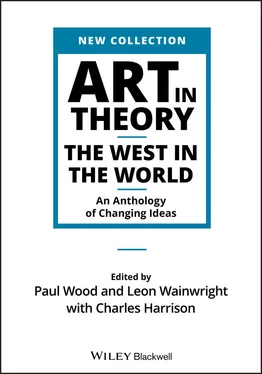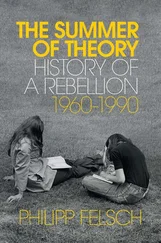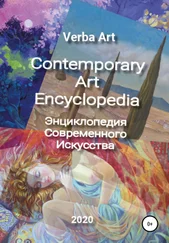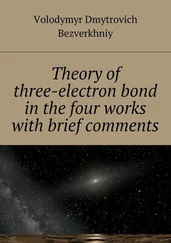He put on a Suit fit for walking, and took his Scimiter, and as soon as he saw that all was quiet in the Camp, he goes out alone, and went over one of the Hills without much difficulty, he found the descent still more easy, and when he came to the Plain, walked on till the Sun rose, and then he saw before him, at a considerable distance, a great Building. He rejoyc’d at the sight, in hopes to be inform’d there of what he had a mind to know. When he came near, he found it was a magnificent Palace, or rather a very strong Castle, of fine black polish’d Marble, and cover’d with fine Steel, as smooth as a Looking‐glass. Being mightily pleas’d that he had so speedily met with something worthy of his Curiosity, he stopp’d before the front of the Castle, and consider’d it with abundance of Attention. […] At last he enter’d, and when he came within the Porch, he cried, Is there nobody here to receive a stranger, who comes in for some Refreshment as he passes by? He repeated the same two or three times; but tho’ he spoke very high, no body answer’d. This silence increased his Astonishment; he came into a very spacious Court, and looking on every side, to see if he could perceive any body, he saw no living thing – But, Sir, says Scheherazade , Day appears, and I must stop.
Ah! Sister, says Dinarzade , you break off at the very best of the Story. It is true, answers the Sultaness, but Sister, you see I am forc’d to do so. If my Lord the Sultan pleases, you may hear the rest to Morrow. Schahriar agreed to this, not so much to please Dinarzade , as to satisfy his own Curiosity, being mighty impatient to know what adventure the Prince met with in the Castle.
Dinarzade , to make amends for her neglect the Night before, never laid Eye together, and when she thought it was time, wak’d the Sultaness, saying to her, My Dear Sister, pray give us an account of what happened in the fine Castle, where you left us yesterday.
Scheherazade forthwith resum’d her Story, and addressing herself to Schahriar says, Sir, the Sultan perceiving nobody in the Court, enter’d the Great Halls, which were hung with Silk Tapestry, the Alcoves and Sofas were cover’d with Stuffs of Mecca , and the Porches with the richest Stuffs of the Indies , mixt with Gold and Silver. He came afterwards into an admirable Saloon, in the middle of which there was a great Fountain, with a Lion of massy Gold at each corner. Water issued at the Mouths of the Four Lions, and this Water, as it fell, form’d Diamonds and Pearls, that very well answer’d a Jett of Water, which springing from the middle of the Fountain, rose as high almost as the bottom of a Cupulo, painted after the Arabian manner.
The Castle on three sides was encompassed by a Garden, with Flower‐Pots, Waterworks, Groves, and a thousand other fine things concurr’d to embellish it; and what completed the Beauty of the place, was an infinite number of Birds, which fill’d the Air with their harmonious Notes, and always staid there, Nets being spread over the Trees, and fasten’d to the Palace to keep them in. The Sultan walked a long time from Apartment to Apartment, where he found every thing very great and magnificent. Being tir’d with walking, he sat down in an open Closet, which had a view over the Garden.
IIA3 Lady Mary Wortley Montagu (1689–1762) Letters from the Turkish Empire
Mary Pierrepoint was the daughter of the fifth earl of Kingston and his wife Lady Mary Fielding, a cousin of the novelist Henry Fielding. In 1712, she eloped to marry the Whig MP Edward Wortley Montagu. Her independent character had ensured that she became unusually well educated for a woman of the period, and by the time of her marriage she was an author of poetry and an epistolary novel. After her marriage she became a prominent society hostess. In 1716, Montagu was appointed Ambassador to Constantinople, and Lady Mary went with him. The letters written to friends in England from her journey through Europe and her eventual residence in Constantinople, led to Mary Wortley Montagu’s lasting literary fame. Her capacity for independent judgement punctured many myths about the Orient, not least about the position of women in Turkish society. Not that her open‐minded letters could single‐handedly overcome ingrained stereotypes. A case in point concerns her accounts of women’s society in Turkish bath houses. Over a century later these descriptions were still fuelling the imagination of European male artists, including, pre‐eminently, Ingres (cf. IIIB12). Here, we have selected four letters, from over 50 which she wrote. Two contain the famous descriptions of the interior of a female bath‐house in Sofia and another in Constantinople. The others focus on material culture, including a Sultana’s rich dress and the Grand Vizier’s palace. The letters also draw comparisons between Ottoman and English society, frequently to the advantage of the former. The extracts are taken from Lord Wharncliffe (ed.), The Letters and Works of Lady Mary Wortley Montagu , London 1861, vol. 1, pp. 283–7, 343–5, 359–62 and 368–70.
To the Lady—
Adrianople, April 1, 1717
I am now got into a new world, where every thing I see appears to me a change of scene; and I write to your ladyship….
I won’t trouble you with a relation of our tedious journey; but I must not omit what I saw remarkable at Sophia, one of the most beautiful towns in the Turkish empire, and famous for its hot baths, that are resorted to both for diversion and health. I stopped here one day on purpose to see them. Designing to go incognita , I hired a Turkish coach. […]
In one of these covered waggons, I went to the bagnio about ten o’clock. It was already full of women. It is built of stone, in the shape of a dome, with no windows but in the roof, which gives light enough. There were five of these domes joined together, the outmost being less than the rest, and serving only as a hall, where the portress stood at the door … The next room is a very large one paved with marble, and all round it, raised, two sofas of marble, one above another. There were four fountains of cold water in this room, falling first into marble basins, and then running on the floor in little channels made for that purpose, which carried the streams into the next room, something less than this, with the same sort of marble sofas, but so hot with steams of sulphur proceeding from the baths joining to it, it was impossible to stay there with one’s clothes on. The two other domes were the hot baths, one of which had cocks of cold water turning into it to temper it to what degree of warmth the bathers have a mind to.
I was in my travelling habit, which is a riding dress, and certainly appeared very extraordinary to them. Yet there was not one of them that shewed the least surprize or impertinent curiosity, but received me with all the obliging civility possible. I know no European court where the ladies would have behaved themselves in so polite a manner to a stranger. I believe in the whole, there were two hundred women, and yet none of those disdainful smiles, or satiric whispers, that never fail in our assemblies when any body appears that is not dressed exactly in the fashion … The first sofas were covered with cushions and rich carpets, on which sat the ladies; and on the second, their slaves behind them, but without any distinction of rank by their dress, all being in the state of nature, that is, in plain English, stark naked, without any beauty or defect concealed. Yet there was not the least wanton smile or immodest gesture amongst them. They walked and moved with the same majestic grace which Milton describes of our general mother. There were many amongst them as exactly proportioned as ever any goddess was drawn by the pencil of Guido or Titian – and most of their skins shiningly white, only adorned by their beautiful hair divided into many tresses, hanging on their shoulders, braided either with pearl or ribbon, perfectly representing the figures of the Graces.
Читать дальше












